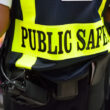Wireless to the rescue
Four people died and 79 were injured during the Interstate 35W bridge collapse in Minneapolis on Aug. 1 — an event that showcased mobile communications and highlighted the need for wireless technologies that can monitor the structural integrity of bridges.
First responder communications in the city operate on an 800 MHz system supported by Project 25 radios, said Rod Olson, the city’s radio system manager. According to Olson, the system represents the first phase of a statewide buildout currently under way and offers first responders an interoperable communications system, including common talk groups that helped connect local, state and federal agencies responding to the bridge collapse.
“There’s been great response to how the 800 MHz system worked,” Olson said. “I haven’t heard any complaints at all. It’s worked very well.”
Olson’s department deployed 32 portable radios to officials staffing the fire department’s mobile command vehicle that supported on-scene radio communications, as well as to volunteers and police officers guarding the perimeters. A video feed from the scene also was wirelessly transmitted to the city’s emergency operations center via the Wireless Minneapolis network, which was partially completed in the area surrounding the eight-lane, 500-foot-span bridge and has since been expanded throughout the bridge site.
Public safety was one of the chief reasons Minneapolis sought the construction of a citywide wireless network, and emergency responders used it to share information in addition to the video during the incident, a city spokesperson said. The city expects the network to be completed by the end of the year.
Perhaps the disaster could have been thwarted, or bridge integrity problems detected sooner, if wireless sensors had been installed, said Kerop Janoyan, a civil and environmental engineering professor at Clarkson University in Potsdam, N.Y., who has developed a beta-stage sensor network that measures bridge vibration, temperature and strain.
The project is supported by a $500,000 research grant from the New York State Energy and Research Development Authority. Data are transmitted via ZigBee, a published specification set of high-level communication protocols designed to enable use of small, low-power digital radios based on the IEEE 802.15.4 standard for wireless personal area networks, Janoyan said.
Data from each weatherized, enclosed sensor are sent directly to a base station, where a laptop computer at the base of the bridge retrieves the information. The system primarily uses off-the-shelf sensors, but the university developed the circuitry that reads and runs the sensors, Janoyan said.
“We are integrating commercially available systems so we don’t have to re-invent the wheel,” he said. “We add the custom signal-conditioning circuitry to interface with the systems we are testing.”
The New York State Department of Transportation and the St. Lawrence County Highway Department recently tested the system on a Potsdam bridge, which was instrumented with 40 sensors. Janoyan said sensor intelligence, either installed externally or built into bridge structures, is not an unreasonable expense — it’s just another way to protect the public from unforeseen disasters.
“The Minneapolis tragedy was a wake-up call, in a sense,” Janoyan said. “We have an existing technology that can monitor the integrity of bridges, but I don’t think people realize that it’s just a small investment and can interface with a lot of sensor technology that’s already out there for homeland security and safety issues.”

















